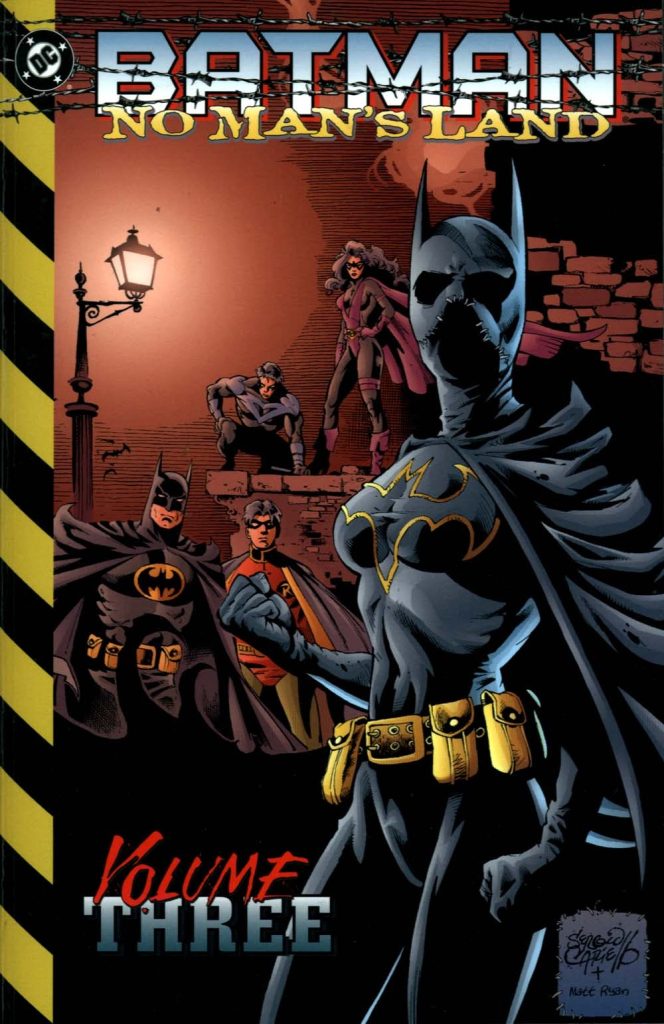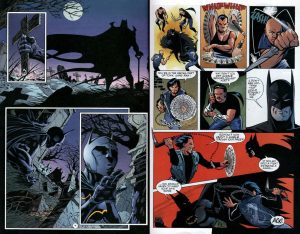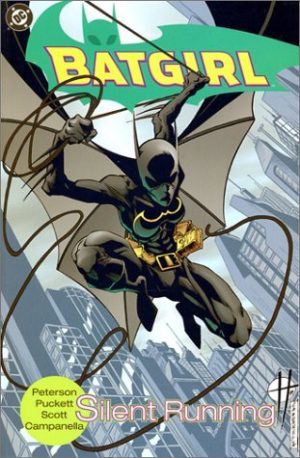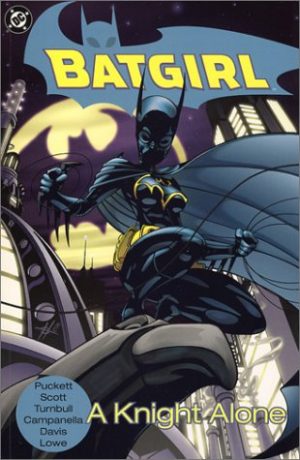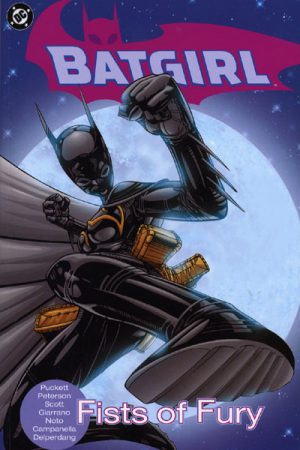Review by Frank Plowright
As is the case all the way through No Man’s Land, assorted creative teams provide their own stories set in the rubble of Gotham after an earthquake and with the city abandoned by national authorities. This being the case, there’s little connection beyond the background to what was presented in Volume Two.
Kelley Puckett and Jon Bogdanove open this selection with Superman deciding the US government may have abandoned Gotham, but he’s not going to. It’s the road to hell paved with good intentions, very intelligently presented. It’s Puckett’s work with Damion Scott (sample art left) that had the biggest effect in the short term as here’s where the mystery of the new Batgirl is revealed, and Cassandra Cain’s backstory is introduced, along with that of her assassin father. Scott’s not yet moved into his experimental phase, so delivers page after page of dynamic storytelling, and Puckett’s unusually imaginative context gives him plenty to play with.
The other sample art is the always reliable Rick Burchett on Larry Hama’s sometimes strained Mr. Freeze encounter. Mike Deodato is still discarding the excesses of his 1990s style, and Sergio Cariello is an always welcome surprise. He’s usually known for bringing his own techniques to an admiration of Joe Kubert’s style, but on Janice Harvey’s Batgirl vs punks story he opts for an attractive cartoon realism instead. He takes his cue from Scott in making much of a scabby, frayed cape.
Greg Rucka’s the driving force behind the remainder of Volume Three, responsible for moving matters forward in several respects. He first writes a convincing series of scenes where Batman has to admit to himself that he can’t control a portion of Gotham on his own, and if he’s going to be effective he has to trust former allies again. Azrael, Batgirl, Huntress, Nightwing, Oracle and Robin are all seen, but will they all make Team Batman? It doesn’t seem as if relations between Batman and James Gordon are going to thaw any time soon, though. Also coming to a head is the matter of Gordon’s control of what remains of Gotham’s police.
Rucka also writes a good story about how Poison Ivy’s capacity to grow fresh fruit and vegetables is suddenly a major bonus. It’s beautifully drawn by Dan Jurgens, although the colouring is astonishingly dull compared alongside the glamour of today’s Poison Ivy appearances. Strangely, it’s not a matter corrected when most of this material appears in the bulkier 2012 No Man’s Land Volume 2 nor for the later Omnibus.
This is another solid volume of entertainment. On to Volume Four.
